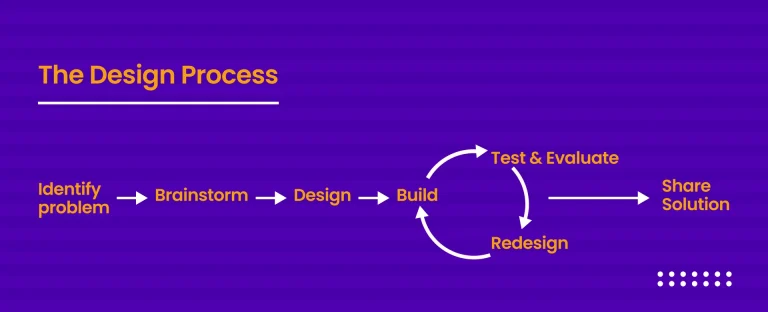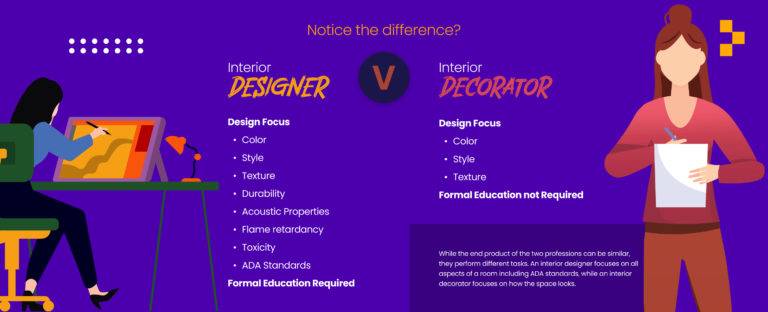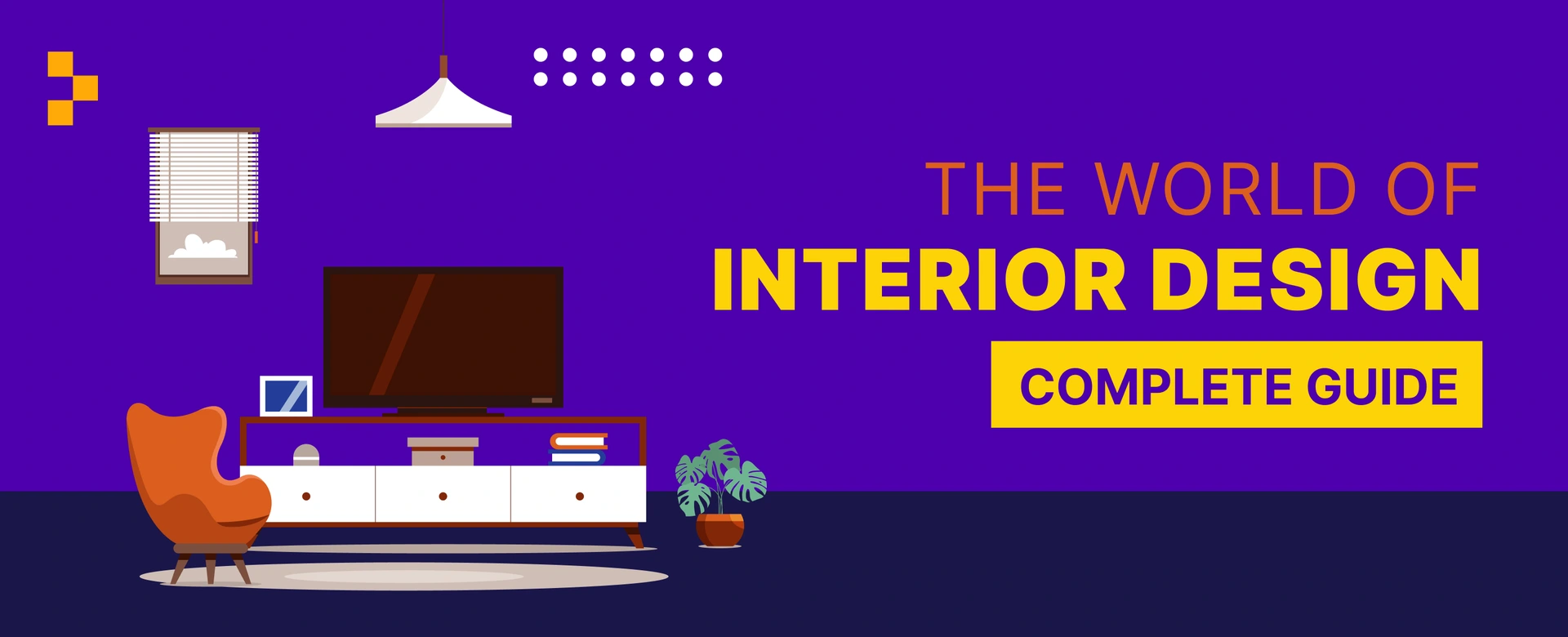Interior design is an art, it is an art of bringing a space to life.
When you step into a beautifully designed room, there’s a noticeable sense of harmony, comfort, and style that instantly captivates you. This transformation of mere spaces into an inviting atmosphere is the essence of Interior design. But what exactly is the definition of Interior design, and how does it transcend the ordinary to create extraordinary environments? Let’s delve into the multifaceted world of interior design and explore its profound impact on our lives.
Interior design, by definition, is the art and science of enhancing the interior of a space to achieve a healthier, more aesthetically pleasing and functional environment. This involves determining how to arrange the space most efficiently. Considering the function of the space, traffic flow, and placement of furniture, fixtures and decor where people feel welcome, relaxed, and at peace. They are thoughtfully designed to cater to the comfort and well-being of their occupants, providing a haven from the outside world.
Significance of Interior Design
In our daily lives, we often overlook the profound impact of our surroundings on our well-being and productivity. However, the spaces we inhabit play a crucial role in shaping our experiences and emotions. Interior design is more than just arranging furniture and choosing colors; it is a comprehensive practice. One of the most significant aspects of interior design is its ability to improve our quality of life and the functionality of spaces.
A well-designed space can positively influence our mood, productivity, and overall well-being. Interior design holds significant importance in our lives for a variety of reasons, ranging from practical to psychological and aesthetic. Thoughtful space planning ensures that a room is both comfortable and functional.
This means that furniture is arranged for ease of movement, and spaces are designed to meet the specific needs of their occupants.The choice of colors, lighting, and materials can significantly affect the ambiance of a room. Soft, warm colors can create a cozy and inviting atmosphere, while natural light can boost mood and energy levels.
The significance of interior design lies in its ability to harmonize aesthetics with functionality. A well-designed interior caters to the needs and preferences of its occupants, making spaces more comfortable, efficient, and visually appealing.
In work environments, interior design can play a crucial role in boosting productivity and creativity. Well-designed work spaces can improve employee satisfaction, foster collaboration, and enhance focus. Properly designed workstations and seating arrangements can reduce strain and increase comfort, leading to better productivity and fewer health issues.
Creative use of color, artwork, and innovative design elements can stimulate creativity and innovation, making the workplace more dynamic and inspiring. Efficient space planning ensures that employees have the resources and spaces they need to work effectively, from quiet areas for focused work to collaborative zones for team activities.
Check out our top-rated courses for undergraduates : https://inspiria.edu.in/degree-courses/
Understanding Interior Designer’s Responsibilities

Interior design is a dynamic and rewarding profession that blends creativity, technical expertise, and project management skills. An interior designer’s responsibilities goes far beyond selecting paint colors and furniture. They are responsible for transforming spaces into functional, beautiful, and safe environments that enhance the quality of life for their occupants.
The responsibilities of an interior designer encompass a wide range of tasks that require a balance of creativity, technical skill, and project management. From conceptualization to implementation, designers play a pivotal role in transforming spaces into functional and aesthetically pleasing environments.
Let’s explore the diverse responsibilities that interior designers undertake to bring their clients’ visions to life.
- The first step in any interior design project is understanding the client’s needs, preferences, and lifestyle which involves Client Consultations, Lifestyle Analysis and Personal Style Identification.
- Effective space planning is crucial for creating functional and efficient interiors. This includes analyzing the space, creating layouts, balancing aesthetics and functionality.
- Choosing the right materials and finishes is vital for achieving the desired look and feel of a space. This responsibility involves material Selection, color Schemes and finishes.
- Furniture and decor play a significant role in defining the character and functionality of a space.
- Lighting is a critical element in interior design that affects the mood and functionality of a space. Interior Designers are responsible for developing comprehensive lighting plans, choosing light fixtures that complement the design and meet the functional needs of the space and strategically using windows, skylights, and other features to maximize natural light.
- Interior designers often act as project managers, overseeing the entire design process from concept to completion which includes Budget Management, Timeline Coordination and Collaboration with Contractors.
- With growing awareness of environmental issues, interior designers also focus on sustainability by selecting eco-friendly materials that reduce environmental impact, designing spaces that incorporate energy-efficient lighting, heating, and cooling systems and implementing practices that minimize waste during the design and construction process.
- Ensuring Safety and Compliance: Safety and regulatory compliance are paramount in interior design. Designers must use Building Codes and Regulations, Fire Safety and Ergonomics.
Interior design responsibilities extend far beyond aesthetics. They encompass a wide range of tasks, from initial consultations and space planning to material selection and project management. By understanding these responsibilities, clients can better appreciate the value of hiring a professional interior designer, and aspiring designers can gain insight into the skills and tasks involved in the profession. Whether transforming a single room or an entire home, the expertise and creativity of an interior designer can turn any space into a harmonious blend of functionality and beauty.
Exploring Career Paths: Interior Design Courses After 12th science
Certification in interior design is a significant step towards establishing a successful and credible career. It not only validates your skills and knowledge but also opens doors to numerous professional opportunities. By investing in certification, you demonstrate your commitment to excellence, enhance your credibility, and position yourself as a leader in the field of interior design. Whether you are just starting your career or looking to advance to the next level, certification can be a powerful tool to help you achieve your professional goals.
Certification in interior design is a formal recognition that a designer has met specific educational and professional standards set by a governing body or organization. These certifications typically require passing rigorous exams that assess a designer’s competence in various areas of interior design, including space planning, building codes, materials, lighting, and more.
Types of Design Courses:
When considering a career in interior design, you might encounter two similar-sounding degrees: a Bachelor of Science (B.Sc.) in Interior Design and a Bachelor of Interior Design (BID) or a Bachelor of Arts (B.A.) in Interior Design. While both degrees aim to prepare students for careers in interior design, there are some key differences in their focus, curriculum, and approach. Understanding these differences can help you choose the program that best aligns with your career goals and interests.
1) Bachelor of Science (B.Sc.) in Interior Design:
- Technical Focus: This degree emphasizes the technical, scientific, and practical aspects of interior design. It often includes courses on building systems, ergonomics, materials science, and environmental psychology.
- Research-Based: The curriculum might involve more analytical and research-oriented coursework, preparing students to approach design problems with a methodical and evidence-based mindset.
- STEM Integration: There may be a stronger integration of STEM (Science, Technology, Engineering, Mathematics) subjects, which can be beneficial for students interested in the more technical and structural aspects of interior design.
A Bachelor of Science, BSc in Interior Designing is an undergraduate program that combines scientific principles with artistic creativity to train students in designing and improving interior spaces. Typically spanning three to four years, this program provides a balanced education that integrates theoretical knowledge with practical experience.
Exploring Career Paths: Interior Design Courses After 12th Commerce and Arts
Choosing a career path after completing your 12th grade can be a daunting decision, especially for commerce students who might feel their options are limited to traditional fields like accounting, finance, or business. However, if you have a flair for creativity, a keen eye for aesthetics, and a passion for transforming spaces, pursuing interior design courses after 12th commerce could be a rewarding and fulfilling choice.
Most institutions accept students from any stream, including commerce, based on entrance exams or merit.Choosing interior design courses after 12th commerce can open doors to a creative and dynamic career path. It allows you to blend your artistic talents with practical skills, leading to a fulfilling profession that makes a tangible impact on people’s lives.
With numerous institutes offering quality education and the growing demand for skilled designers, this field promises a bright and exciting future for aspiring designers. If you’re passionate about creating beautiful, functional spaces, interior design might just be the perfect career for you.
Opting for interior design courses after 12th arts can lead to a fulfilling career that combines creativity with practical skills. The field offers diverse opportunities, from designing residential and commercial spaces to working in the entertainment and exhibition industries.
With the right education and training, you can transform your passion for design into a successful and rewarding profession. If you’re an arts student with a knack for creativity and a desire to shape beautiful, functional spaces, interior design might be the perfect career path for you.
Bachelor of Interior Design (BID) or Bachelor of Arts (B.A.) in Interior Design:
A Bachelor of Interior Design (BID) is an undergraduate degree program that equips students with the knowledge and skills necessary to design and enhance interior spaces. This program typically spans three to four years, depending on the institution. It combines theoretical learning with practical experience, ensuring that graduates are well-prepared to enter the professional world of interior design.
- Creative Focus: These degrees tend to emphasize the artistic, aesthetic, and creative aspects of interior design. Courses might focus more on design theory, history, color theory, and creative expression.
- Conceptual and Design-Based: The curriculum is likely to be more conceptual and design-oriented, fostering creativity and innovative thinking. Students might engage in more hands-on design projects and studio work.
- Liberal Arts Integration: There may be a broader integration of liberal arts courses, providing a well-rounded education that includes humanities, social sciences, and design principles.
Both Bachelor of Interior Design and BSc in Interior Design programs typically span four years and cover a diverse range of subjects designed to provide a well-rounded education.
It opens up a wide array of career opportunities. Graduates can pursue roles such as:
- Interior Designer: Working with clients to design and decorate residential and commercial spaces.
- Interior Decorator: Specializing in the selection of furnishings, colors, and accessories to enhance interior spaces.
- Space Planner: Optimizing the layout and functionality of spaces, particularly in commercial and corporate environments.
- Furniture Designer: Creating custom furniture pieces that complement interior designs.
- Lighting Designer: Focusing on the use of lighting to enhance spaces and create desired atmospheres.
- Set Designer: Designing sets for film, television, and theatre productions.
- Exhibition Designer: Creating engaging and functional spaces for exhibitions, trade shows, and museums.
- Project Manager: Overseeing design projects from conception to completion, ensuring they meet client expectations and are completed on time and within budget.
Interior design diploma courses:
Interior design diploma courses typically range from six months to two years, depending on the level of depth and comprehensiveness of the program.The curriculum is designed to cover the core aspects of interior design in a concise and practical manner. This includes a mix of theoretical knowledge and hands-on training.
Degree Programs:
These include graduate programs offered by colleges, universities, and art schools. They typically lead to a Master’s degree in design. Degree programs in interior design are offered at the undergraduate and graduate levels by colleges, universities, and art schools. comprehensive training in all aspects of the profession. Students learn design theory, technical skills, and professional practices through a combination of coursework, studio projects, and internships.
Specialized Workshops and Short Courses:
Specialized workshops and short courses provide focused training in specific areas of interior design. These may include topics such as lighting design, textile selection, 3D rendering, or historic preservation. Workshops are often taught by industry professionals and offer hands-on experience and practical skills that can be applied immediately in a professional setting.
Specialized Certifications in Interior Design:
Certification programs in interior design offer professional recognition and validation of expertise in specific areas of the field. Examples include certifications in kitchen and bath design, sustainable design, or universal design for aging in place. These programs typically require completion of coursework, passing an exam, and sometimes fulfilling practical experience requirements.
Interior Design Courses After 12th: Launching Your Creative Career
1. Diploma in Interior Design
Diploma programs are shorter and more focused, providing essential skills and knowledge in interior design. They are ideal for students who want to enter the workforce quickly.
Duration: 1-2 years
Core Subjects:
- Basics of Interior Design
- Space Planning
- Interior Materials
- CAD and 3D Modeling
- Project Management
2. Bachelor of Interior Design (BID)
A Bachelor of Interior Design program provides comprehensive training in all aspects of interior design. Students gain hands-on experience through studio projects and internships.
Duration: 3-4 years
Core Subjects:
- Design Principles
- Space Planning
- Interior Materials and Finishes
- Computer-Aided Design (CAD)
- Lighting Design
- History of Interior Design
- Interior Design Concepts
- Visual Communication
- Art and Design History
- Sustainable Design
- Studio Practices
3. Bachelor of Science (B.Sc.) in Interior Design
This program blends theoretical knowledge with practical skills in interior design.
Duration: 3 years
Core Subjects:
- Design Fundamentals
- Technical Drawing
- Furniture Design
- Color Theory
- Building Services
- Environmental Studies
4. Certificate Courses in Interior Design
Certificate courses offer intensive, short-term training in specific areas of interior design. They are suitable for those who want to gain quick expertise or enhance existing skills.
Duration: 6 months – 1 year
Core Subjects:
- Basic Design Principles
- Introduction to CAD
- Space Planning and Layout
- Interior Lighting
- Furnishing and Decor
6. Online Interior Design Courses
Duration: Varies (typically a few months to a year)
Overview: Online courses provide flexibility and convenience, allowing students to learn at their own pace. These courses often include video lectures, interactive assignments, and peer feedback
Core Subjects:
- Interior Design Fundamentals
- Software Skills (e.g., AutoCAD, SketchUp)
- Color and Lighting
- Sustainable Design
- Design Projects
Online V/S Campus Learning
Choosing between online and on-campus learning for an interior design degree or course can be a significant decision. Each mode of learning offers unique advantages and challenges, and the best choice depends on your personal circumstances, learning style, and career goals. Here’s a comprehensive guide to help you understand the key differences and benefits of both online and on-campus learning in interior design.
1. Flexibility and Convenience
Online Learning:
- Flexible Schedule: Online courses often allow students to study at their own pace, making it easier to balance education with work or personal commitments.
- Location Independence: Students can access course materials and participate in classes from anywhere in the world, eliminating the need for commuting or relocating.
- Self-Paced Learning: Many online programs offer asynchronous learning, where students can complete coursework on their own schedule.
On-Campus Learning:
- Structured Schedule: On-campus programs typically follow a fixed schedule with set class times, providing a structured learning environment.
- Immediate Access to Facilities: Students have direct access to campus resources, such as design studios, libraries, and computer labs.
- In-Person Interaction: Face-to-face interaction with instructors and peers can enhance learning through immediate feedback and collaborative work.
2. Hands-On Experience and Practical Training
Online Learning:
- Virtual Studios and Simulations: Some online programs use virtual design studios, simulations, and digital tools to provide practical training.
- Limited Physical Interaction: Hands-on experience can be limited, though some programs may require occasional in-person workshops or residencies.
- Remote Collaboration: Students often collaborate through online platforms, gaining experience with remote work tools commonly used in the industry.
On-Campus Learning:
- Hands-On Projects: On-campus programs offer extensive hands-on training through studio classes, workshops, and labs.
- Immediate Access to Tools and Materials: Students can use physical materials and tools, gaining practical experience with real-world applications.
- Direct Mentorship: In-person mentorship and guidance from instructors can enhance the learning process and skill development.
3. Networking and Community
Online Learning:
- Virtual Networking: Online programs often include forums, chat groups, and virtual networking events to connect with peers and industry professionals.
- Global Connections: Students can build a diverse network with peers and instructors from around the world.
- Self-Motivation Required: Building a sense of community and staying motivated can be more challenging without regular in-person interactions.
On-Campus Learning:
- In-Person Networking: Regular face-to-face interactions with classmates, instructors, and guest speakers facilitate networking.
- Campus Community: Being part of a campus community can provide social and professional support, enhancing the overall educational experience.
- Extracurricular Activities: Participation in clubs, events, and design competitions can enrich learning and networking opportunities.
4. Technology and Resources
Online Learning:
- Digital Tools and Software: Students learn to use industry-standard design software and tools, often gaining proficiency with digital platforms essential for remote work.
- Access to Online Libraries and Resources: Many online programs provide access to extensive digital libraries, databases, and design resources.
- Technical Requirements: Students need a reliable computer and internet connection, and may need to invest in specific software and hardware.
On-Campus Learning:
- Physical Resources: Access to physical design studios, workshops, and materials enhances hands-on learning.
- Technology Integration: On-campus programs also teach digital design tools and software, often providing access to high-end equipment and resources.
- Resource Availability: Immediate access to campus resources and support services can facilitate the learning process.
5. Cost and Financial Considerations
Online Learning:
- Lower Tuition Fees: Online programs often have lower tuition fees compared to on-campus programs.
- No Commuting Costs: Savings on commuting, housing, and relocation can make online learning more affordable.
- Flexible Payment Options: Some online programs offer flexible payment plans and financial aid options.
On-Campus Learning:
- Higher Tuition Fees: On-campus programs may have higher tuition fees due to the cost of facilities and resources.
- Additional Expenses: Costs for commuting, housing, and living expenses need to be considered.
- Financial Aid and Scholarships: On-campus students may have access to more financial aid and scholarship opportunities through the institution.
6. Accreditation and Recognition
Online Learning:
- Accredited Programs: Ensure that the online program is accredited by recognized industry bodies (e.g., Council for Interior Design Accreditation (CIDA)).
- Employer Recognition: Reputable online degrees are increasingly recognized by employers, especially from accredited institutions.
On-Campus Learning:
- Established Reputation: On-campus programs from well-known institutions often carry a strong reputation and industry connections.
- Professional Accreditation: Many on-campus programs are accredited and widely recognized in the industry, enhancing employability.
Both online and on-campus learning in interior design have their own unique benefits and challenges. Online learning offers flexibility, convenience, and the ability to study from anywhere, making it ideal for those with work or personal commitments.
On-campus learning provides a structured environment, hands-on experience, and direct access to resources and mentorship, which can be beneficial for students who thrive in a traditional academic setting.
When choosing between online and on-campus programs, consider your learning style, career goals, personal circumstances, and the specific features of the programs you are interested in. Both paths can lead to a successful and fulfilling career in interior design, so choose the one that best aligns with your needs and aspirations.
Job Opportunities in Interior Design
Interior design is a vibrant and diverse field that offers a multitude of career opportunities for creative individuals. Whether you’re just starting your journey or looking to pivot within the industry, there are numerous pathways to explore.
Let’s delve into some of the exciting career opportunities in interior design and what each role entails.
1. Residential Interior Designer
2. Commercial Interior Designer
3. Hospitality Designer
4. Sustainable Designer
5. Lighting Designer
6. Set Designer
7. Exhibition Designer
Top Interior Design Colleges in India:
India boasts several prestigious institutions that offer top-notch education in interior design, nurturing the talents of aspiring designers and shaping the future of the industry. In this blog post, we’ll explore some of the leading interior design colleges in India and their locations.
- National Institute of Design (NID), Ahmedabad, Gujarat – NID offers a Bachelor of Design (B.Des) program in Furniture and Interior Design
- Sir JJ School of Art, Mumbai, Maharashtra – offers a Bachelor of Fine Arts (BFA) program with a specialization in Interior Decoration.
- Arch Academy of Design, Jaipur, Rajasthan – offers comprehensive courses in interior design at undergraduate and postgraduate levels.
- National Institute of Fashion Technology (NIFT), Delhi– offers a Bachelor of Design (B.Des) program in Interior Design.
- CEPT University, Ahmedabad, Gujarat – offers a Bachelor of Interior Design (BID) program focusing on design thinking, sustainability, and technology integration.
- Inspiria Knowledge Campus, Siliguri, West Bengal – offers a Bachelor of Interior Design (BID) program.
- Rachna Sansad School of Interior Design, Mumbai, Maharashtra – Bachelor of Fine Arts (BFA) program with a specialization in Interior Design.
- Vogue Institute of Fashion Technology, Bangalore, Karnataka – offers a Bachelor of Science (B.Sc) program in Interior Design.
- Srishti Institute of Art, Design and Technology, Bangalore, Karnataka – offers a Bachelor of Design (B.Des) program in Interior Design.
- Indian Institute of Art and Design (IIAD), Delhi – offers a Bachelor of Arts (Hons) in Interior Architecture and Design.
Benefits of Pursuing an Interior Designing Degree
Are you someone who sees beauty in every space, visualizes the potential in every room, and dreams of transforming interiors into works of art? If so, then pursuing a degree in interior design might just be your calling. Beyond just fulfilling your passion, there are numerous benefits to obtaining a formal education in interior design.
Let’s delve into some of the key advantages of earning an interior design degree.
- Professional Skill Development: From drafting and space planning to color theory and material selection, a structured curriculum equips you with the technical expertise needed to excel in the field.
- Industry Knowledge and Trends: A formal education provides you with valuable insights into industry practices, current trends, and emerging technologies.
- Networking Opportunities: An interior design degree program offers numerous networking opportunities, from industry events and guest lectures to collaborations with fellow students and faculty members.
- Credibility and Recognition: In a competitive job market, having a degree from a reputable institution lends credibility to your skills and qualifications. It open doors to prestigious job opportunities, internships, and collaborations within the industry.
- Versatile Career Opportunities: An interior design degree provides a solid foundation for pursuing advanced studies, certifications, or specialization in niche areas of interest.
- Personal and Professional Growth: It challenges you to think critically, solve problems creatively, and communicate effectively – skills that are invaluable in any career path.
The job market for interior designers in India is expected to grow significantly over the next few years. Here are some key points about the job market in interior design in India:
Career Paths and Specializations
- Specializations: Interior designers can specialize in various areas, such as residential, commercial, industrial, sustainable, and healthcare design.
- Career Options: Interior designers can work as independent consultants, freelancers, or employees in design firms, architecture firms, construction companies, or furniture retailers.
Career Opportunities in India
- Interior Designing Firms: Interior designers can work in interior designing firms, focusing on residential, commercial, and industrial projects.
- Furniture Companies: They can also work in furniture companies, designing and manufacturing furniture for various industries.
- Architectural Firms: Interior designers can work in architectural firms, collaborating with architects to design and develop buildings and spaces.
- Film & Television Production Companies: They can work in film and television production companies, creating sets for movies and TV shows.
- Healthcare Sector: Interior designers can work in the healthcare sector, designing hospitals, clinics, and other healthcare facilities.
- Urban Development Sector: They can work in the urban development sector, designing public spaces and infrastructure.
- Construction Firms: Interior designers can work in construction firms, ensuring that buildings are designed and constructed according to safety and functional standards.
- Event Management Firms: They can work in event management firms, designing and managing events such as weddings, conferences, and exhibitions.
- Business Houses: Interior designers can work in business houses, designing and managing office spaces and corporate facilities.
Overall, the job market for interior designers in India is expected to grow significantly, with various industries seeking skilled professionals to cater to their design needs. However, the field is highly competitive, and designers must stay updated with the latest trends, technologies, and software programs to remain relevant.
An Inside Look at Interior Design Course after 12th
Embarking on a journey to study interior design means delving into a diverse curriculum that equips you with the skills and knowledge needed to excel in this dynamic field. Let’s take a closer look at the typical course curriculum of an interior design program.
Design Fundamentals: Students learn about elements such as color theory, form, line, texture, and scale, and how these elements interact to create visually appealing compositions.
Drafting and Technical Skills: Proficiency in drafting and technical drawing is essential for communicating design ideas effectively. Interior design students learn drafting techniques, including orthographic projection, floor plans, elevations, and sections. They also acquire skills in computer-aided design (CAD) software, such as AutoCAD, to create precise and detailed drawings of interior spaces.
Space Planning and Layout: Students learn about spatial relationships, circulation patterns, and zoning regulations as they develop floor plans for different spaces. They explore strategies for maximizing efficiency, flexibility, and user comfort within different spatial configurations.
Materials and Finishes: Courses in materials and finishes introduce students to various options available for flooring, wall treatments, cabinetry, and furniture. They learn about the properties, characteristics, and applications of different materials, as well as sustainable and environmentally friendly alternatives.
Furniture Design and Procurement: Interior design programs often include courses in furniture design, where students explore the principles of ergonomics, anthropometrics, and furniture construction. They also learn about sourcing, specifying, and procuring furniture and accessories to meet the needs and preferences of clients.
Lighting Design: Students study the principles of lighting design, including natural and artificial lighting techniques, fixture selection, and lighting controls. They learn how to use lighting to enhance architectural features, highlight focal points, and create visually dynamic environments.
Building Codes and Regulations: Courses in building codes cover topics such as accessibility requirements, fire safety regulations, and environmental sustainability standards. Students learn how to navigate legal and regulatory frameworks while designing interior spaces.
Professional Practice and Portfolio Development: Aspiring interior designers learn about the business aspects of the profession, including project management, budgeting, and client relations. They develop skills in presentation techniques, communication, and marketing to effectively communicate their design ideas to clients and stakeholders. Additionally, they create a professional portfolio showcasing their work and accomplishments, which serves as a valuable tool for securing internships and employment opportunities.
Essential Skills for Interior Design Jobs

To excel in this dynamic field, you’ll need more than just a passion for design – you’ll need a diverse set of skills that encompass both artistic flair and technical proficiency.
Let’s explore some of the essential skills needed for interior design jobs.
- Creativity and Design Sensibility: A keen eye for aesthetics, color harmony, proportion, and composition is essential for creating visually pleasing interiors that resonate with clients and users.
- Technical Proficiency: Proficiency in drafting, space planning, and computer-aided design (CAD) software is crucial for creating accurate drawings and visualizations of interior spaces.
- Communication and Collaboration: Strong verbal, written, and visual communication skills are essential for presenting design concepts, negotiating with vendors, and collaborating with architects, engineers, and contractors.
- Problem-Solving and Critical Thinking: The ability to think critically, analyze problems from multiple perspectives, and brainstorm innovative design solutions is invaluable in navigating the diverse requirements of interior design projects.
- Attention to Detail: Interior designers must have meticulous attention to detail, ensuring that every aspect of the design aligns with the client’s vision, budget, and timeline, while also adhering to technical and regulatory requirements.
- Time Management and Project Management: Strong time management and project management skills are essential for organizing workflows, prioritizing tasks, and ensuring that projects are completed on time and within budget. The ability to juggle multiple projects simultaneously while maintaining quality and efficiency is a hallmark of successful interior designers.
- Client Relations and Customer Service: Exceptional customer service skills, including empathy, patience, and responsiveness, are essential for fostering trust and satisfaction throughout the design process.
- Continuous Learning and Adaptability: Adaptability, flexibility, and a willingness to embrace new ideas and approaches are essential for staying ahead in this competitive industry.
Exploring the Latest Interior Design Trends and Innovations
In the ever-evolving world of interior design, staying ahead of the curve is key to creating spaces that are not only stylish and functional but also reflect the latest trends and innovations. From bold color palettes to sustainable materials, the landscape of interior design is constantly evolving, driven by changing tastes, technological advancements, and societal shifts. Let’s dive into some of the most exciting trends and innovations shaping the world of interior design today.
- Biophilic Design: Inspired by nature, biophilic design seeks to bring the outdoors indoors, creating spaces that foster a sense of connection with the natural world. From living green walls and indoor gardens to natural light and organic materials, biophilic design elements are becoming increasingly popular in both residential and commercial interiors.
- Sustainable Materials and Practices: With growing awareness of environmental issues, sustainability has become a driving force in interior design. Designers are increasingly opting for eco-friendly materials such as reclaimed wood, recycled plastics, and low-VOC paints, as well as implementing energy-efficient lighting and heating systems.
- Multifunctional Spaces: As urban living spaces become smaller and more compact, the demand for multifunctional interiors is on the rise. Designers are tasked with maximizing space efficiency by creating flexible layouts that can adapt to different uses and activities. From convertible furniture and modular storage solutions to hidden compartments and fold-down beds, multifunctional design elements allow for seamless transitions between work, leisure, and relaxation in modern living spaces.
- Bold Colors and Patterns: While neutral tones have long dominated interior design palettes, there’s a growing trend towards embracing bold colors and patterns to add personality and vibrancy to spaces.
- Technology Integration: Technology continues to revolutionize the way we live, work, and interact with our surroundings, and interior design is no exception. From smart home automation systems and voice-controlled devices to immersive virtual reality experiences, designers are leveraging technology to enhance comfort, convenience, and connectivity in interior spaces.
- Cultural Influences and Global Design: In an increasingly interconnected world, cultural diversity and global influences are shaping interior design trends like never before. Designers are drawing inspiration from diverse cultures, traditions, and aesthetics, infusing spaces with elements that reflect a sense of place and heritage.
In conclusion, the world of interior design is a dynamic and ever-evolving landscape, driven by a blend of creativity, innovation, and cultural influences. By embracing trends and innovations that resonate with clients’ needs and aspirations, designers can create spaces that are not only visually stunning but also functional, sustainable, and reflective of the times we live in. Whether it’s incorporating biophilic elements, embracing bold colors, or leveraging technology, the possibilities for creativity and expression in interior design are truly limitless.
Architecture V/S Interior Design
In the realm of design, two disciplines stand out as pillars of shaping our built environment: architecture and interior design. While they share some similarities, each field brings its own unique perspectives, methodologies, and areas of focus to the table.
Let’s delve into the key differences between architecture and interior design, shedding light on their distinct roles and contributions to the world of design.
- Scope and Scale: Perhaps the most fundamental difference between architecture and interior design lies in their scope and scale. Architecture encompasses the design of entire buildings, from conceptualizing the overall structure and layout to detailing exterior facades and spatial organization.
Interior design, on the other hand, focuses specifically on the interior spaces within those buildings, addressing aspects such as layout, furnishings, finishes, and decorative elements.
- Function vs. Aesthetics: While both architecture and interior design strive to create spaces that are functional, comfortable, and visually appealing, they often approach this goal from different angles. Architects prioritize the structural integrity, spatial flow, and environmental considerations of a building, balancing practical requirements with aesthetic aspirations.
Interior designers, meanwhile, concentrate on optimizing the functionality and usability of interior spaces, while also enhancing their aesthetic appeal through thoughtful selection of furnishings, materials, and finishes.
- Design Process: The design process in architecture typically follows a hierarchical sequence, starting with conceptual design and schematic drawings, followed by detailed design development, construction documents, and finally, construction administration. Architects work closely with engineers, contractors, and other stakeholders to bring their vision to life, adhering to building codes, regulations, and industry standards throughout the process.
In contrast, interior design projects often involve a more iterative and collaborative approach, with designers engaging clients in a dialogue to understand their needs, preferences, and aspirations before developing design concepts and proposals.
- Regulatory Requirements: Architects are subject to stringent regulatory requirements and licensure processes, as they are responsible for ensuring that buildings comply with safety, health, and accessibility codes. They must possess a professional degree in architecture, complete a period of practical experience, and pass a licensing examination to practice independently.
Interior designers, while not typically required to be licensed, may still need to adhere to local building codes and regulations, particularly when it comes to issues such as egress, fire safety, and accessibility.
- Scale of Intervention: Architecture often involves long-term, large-scale interventions in the built environment, such as designing new buildings, renovating existing structures, or master planning urban areas. Architects play a pivotal role in shaping the physical fabric of cities and communities, addressing complex issues related to urbanization, sustainability, and social equity.
Interior design, by contrast, tends to focus on smaller-scale interventions within existing buildings, such as renovating interiors, reconfiguring layouts, or selecting furnishings and finishes to enhance functionality and aesthetics.
While architectural design and interior design share common goals of creating functional, visually appealing spaces, they differ in terms of their scope, approach, and focus. Architects are concerned with the design of entire buildings, addressing structural, spatial, and environmental considerations, while interior designers specialize in optimizing the functionality and aesthetics of interior spaces. Together, these two disciplines work in harmony to shape our built environment, enriching our lives and experiences through the power of design.
Insider Tips for Landing Interior Design Positions
So, you’ve got an eye for aesthetics, a flair for creativity, and a passion for transforming spaces – now it’s time to take your interior design career path to the next level. Whether you’re a recent graduate eager to kickstart your professional journey or a seasoned designer looking for new opportunities, acing the interview is crucial to securing your dream job in the competitive world of interior design.
Let’s explore some insider tips and strategies for nailing your next interior design interview.
- Research: Before stepping foot into the interview room, take the time to thoroughly research the company you’re interviewing with.Understanding the company’s culture, values, and design aesthetic will not only demonstrate your genuine interest but also allow you to tailor your responses to align with their vision and goals.
- Showcase Your Portfolio: Your portfolio is your visual calling card – a showcase of your skills, creativity, and design sensibility. Curate a selection of your best work, including a diverse range of projects that highlight your versatility and expertise. Be prepared to walk through each project during the interview, discussing your design process, challenges faced, and solutions implemented.
- Demonstrate Technical Proficiency: In addition to showcasing your design flair, be prepared to demonstrate your technical proficiency and proficiency with design tools and software. Whether it’s CAD software like AutoCAD or 3D rendering programs like SketchUp or Revit, employers value candidates who are adept at translating design concepts into precise drawings and visualizations.
- Highlight Your Collaborative Skills: Interior design is a collaborative endeavour that requires teamwork, communication, and adaptability. Be prepared to share examples of your ability to collaborate effectively with clients, architects, engineers, contractors, and other stakeholders throughout the design process. Emphasize your strong communication skills, problem-solving abilities, and willingness to listen and incorporate feedback from others.
- Prepare for Behavioral Questions: Employers often assess candidates based on their soft skills, professionalism, and cultural fit. Be prepared to answer behavioural questions that delve into your past experiences, such as how you handled challenging clients, resolved conflicts within a design team, or managed tight deadlines and budgets.
- Ask Thoughtful Questions: An interview is not just an opportunity for the employer to evaluate you – it’s also a chance for you to assess whether the company is the right fit for your career goals and aspirations. Prepare a list of thoughtful questions to ask the interviewer about the company culture, project opportunities, career development opportunities, and expectations for the role.
- Follow Up with Gratitude: Don’t forget to follow up with a thank-you email or note expressing your gratitude for the opportunity to interview. Reiterate your interest in the position and briefly recap why you believe you’re the perfect fit for the role.
Preparing for an interior design interview requires a combination of research, preparation, and self-confidence. By showcasing your design portfolio, technical skills, collaborative abilities, and professionalism, you’ll be well-positioned to impress potential employers and land interior design job opportunities. So, polish up your portfolio, practice your interview responses, and go confidently into your next interior design interview.
Top interior designers in India, known for their creativity, innovation, and expertise:
- Sunita Kohli: Renowned for her expertise in heritage conservation and traditional Indian design, Sunita Kohli is a pioneer in the field of interior design. Her work often blends classic Indian aesthetics with contemporary sensibilities, creating timeless and elegant interiors.
- Shabnam Gupta: With a distinctive style that blends eclecticism, color, and texture, Shabnam Gupta is celebrated for her bold and vibrant interiors. Her designs reflect a playful yet sophisticated approach to space, incorporating elements of Indian craftsmanship and global influences.
- Vinita Chaitanya: Known for her refined and minimalist aesthetic, Vinita Chaitanya creates serene and harmonious interiors that prioritize clean lines, natural materials, and understated elegance. Her designs evoke a sense of tranquility and balance, celebrating simplicity and purity of form.
- Ashiesh Shah: Known for his avant-garde approach to design, Ashiesh Shah is celebrated for his experimental and boundary-pushing interiors. His work often challenges conventions and explores new materials, forms, and textures, pushing the boundaries of traditional design.
- Rajiv Saini: With a focus on contemporary luxury, Rajiv Saini creates sophisticated and refined interiors that exude understated elegance. His designs often feature clean lines, muted tones, and a seamless integration of art and architecture, resulting in spaces that are both timeless and modern.
- Richa Bahl: Specializing in residential and hospitality design, Richa Bahl is known for her luxurious
and bespoke interiors that combine opulence with functionality. Her designs often feature rich textures, sumptuous fabrics, and curated furnishings, creating spaces that are both inviting and indulgent. - Punit Jasuja: With a keen eye for detail and a passion for craftsmanship, Punit Jasuja creates interiors that are both exquisite and meticulously crafted. His designs often celebrate traditional Indian craftsmanship, incorporating intricate details and handcrafted elements that add depth and character to the space.
- Krishna Mehta: Known for her eclectic and vibrant style, Krishna Mehta creates interiors that are infused with color, culture, and creativity. Her designs often draw inspiration from Indian textiles, patterns, and motifs, resulting in spaces that are dynamic, expressive, and full of personality.
These interior designers represent the diverse talent and creativity that India has to offer, each bringing their unique perspective and vision to the world of design.
Similarities Between Fashion Design and Interior Design
The worlds of fashion and interior design are more intertwined than one might initially think. Both fields not only share a foundation in aesthetics and creativity but also influence and inspire each other in profound ways. Let’s explore the deep interconnectedness between fashion design and interior design.
1. Trend Influence: Fashion and interior design often share trends that simultaneously emerge in both industries. For instance, the color of the year selected by Pantone can be seen influencing both fashion runways and interior decor. When vibrant hues become popular in clothing, they often make their way into home accessories, wall colors, and furniture.
2.Material and Textiles: The use of materials and textiles is a significant crossover point. Luxury fabrics such as silk, velvet, and leather are not just confined to couture but are also staples in high-end interior design. The textures, patterns, and innovations in fabric technology often travel from the fashion industry into interior spaces, creating a seamless blend between what we wear and where we live.
3. Color Palettes: The color palettes of fashion collections can inspire interior designers to incorporate similar hues in their projects. A season’s dominant colors in fashion can drive the palette choices in interior design, creating cohesive visual narratives across both personal attire and home environments.
4. Historical and Cultural Inspiration: Both disciplines frequently draw upon historical and cultural elements. For example, a fashion designer might be inspired by the ornate details of Baroque architecture, and this influence could manifest in both a clothing line and a line of home furnishings. Similarly, cultural motifs and traditional craftsmanship from various cultures often find expression in both fields.
5. Lifestyle and Personal Expression: Both fashion and interior design are powerful forms of personal expression. The way people dress and the way they decorate their homes are both reflections of personal taste, lifestyle, and identity. Designers in both fields strive to understand and express the personalities and desires of their clients.
6. Sustainability: Sustainability is a growing concern in both industries. Eco-friendly materials, sustainable practices, and a shift towards timeless rather than trend-driven designs are becoming important in both fashion and interior design. Recycled fabrics, ethical production methods, and sustainable sourcing are considerations that both fashion and interior designers are increasingly prioritizing.
7. Collaborations: Collaborations between fashion designers and interior brands are becoming more common. Renowned fashion houses such as Versace, Armani, and Ralph Lauren have their own home collections, showcasing how fashion sensibilities can translate into interior aesthetics. These collaborations often result in unique and cohesive design experiences that blur the lines between the two disciplines.
Fashion design and interior design are deeply interconnected, with each field continuously influencing and drawing inspiration from the other. From shared trends and materials to collaborations and technological innovations, the synergy between what we wear and where we live creates a harmonious blend of aesthetics and functionality.
The Importance of Internships and Real-World Experience in Interior Design
Internships and real-world experience are critical components of a successful career in interior design. They provide aspiring designers with practical skills, industry knowledge, and professional connections that are essential for navigating the competitive landscape of the design world.
Here’s why internships and real-world experience are invaluable in the field of interior design:
1. Practical Application of Theoretical Knowledge: Interior design education provides students with a strong foundation in design principles, history, and theory. However, applying this knowledge in real-world scenarios is crucial. Internships allow students to work on actual projects, translating their classroom learning into practical skills. This hands-on experience helps bridge the gap between theory and practice, enhancing their ability to create functional and aesthetically pleasing spaces.
2. Skill Development: Internships and real-world experiences are where aspiring designers hone their technical skills. This includes proficiency in design software (such as AutoCAD, SketchUp, and Revit), hand drafting, and creating mood boards. Working on live projects also helps improve soft skills like communication, teamwork, and project management, which are essential for successful design practice.
3. Understanding the Design Process: Real-world experience exposes interns to the entire design process, from initial client meetings and conceptualization to project execution and completion. This comprehensive understanding is crucial for developing a holistic approach to design, ensuring that new designers are well-prepared to handle all aspects of a project, including budgeting, sourcing materials, and coordinating with contractors.
4. Networking Opportunities: Internships provide valuable networking opportunities, allowing aspiring designers to connect with industry professionals, mentors, and potential employers. Building a professional network can lead to job offers, collaborations, and mentorship opportunities, which are essential for career growth in the design industry.
5. Portfolio Building: A strong portfolio is a designer’s most important tool for securing clients and job opportunities. Internships allow designers to work on a variety of projects, adding diverse and real-world examples to their portfolios. This demonstrates their ability to handle different styles, spaces, and client needs, making them more attractive to potential employers or clients.
6. Exposure to Industry Standards and Practices: Working in a professional setting exposes interns to industry standards, best practices, and the latest trends in interior design. This includes understanding building codes, sustainability practices, and the use of new materials and technologies. Staying up-to-date with industry developments ensures that new designers are competitive and knowledgeable.
7. Learning from Experienced Professionals: Internships provide the opportunity to learn from seasoned designers who can offer guidance, feedback, and insights that can’t be found in textbooks. Mentorship from experienced professionals helps interns understand the nuances of the profession, learn best practices, and avoid common pitfalls.
8. Enhancing Creativity and Problem-Solving Skills: Real-world projects often come with unique challenges and constraints. Internships teach aspiring designers how to think creatively and develop innovative solutions within these limitations.
9. Gaining Confidence and Professionalism: Internships help build confidence by providing a supportive environment where aspiring designers can experiment, learn, and grow. Exposure to client interactions, presentations, and feedback helps them develop a professional demeanor and communication skills, which are vital for success in the design industry.
Internships and real-world experience are indispensable for aspiring interior designers. They provide practical skills, industry knowledge, and professional networks that are essential for a successful career. By combining academic learning with hands-on experience, aspiring designers can develop a comprehensive skill set, build a strong portfolio, and enter the professional world with confidence and competence.
Embracing a Global Perspective in Interior Design Courses
In today’s interconnected world, interior design is increasingly influenced by global trends, cultures, and innovations. For interior design students, embracing a global perspective in their education is not just beneficial but essential. A global outlook equips future designers with the cultural sensitivity, diverse knowledge, and creative adaptability needed to succeed in an ever-evolving industry.
Here’s why and how a global perspective should be integrated into interior design courses.
1. Cultural Sensitivity and Diversity: Understanding and respecting cultural differences is crucial in interior design. A global perspective helps students appreciate the rich tapestry of design traditions and practices from around the world. By studying diverse design philosophies, materials, and aesthetics, students learn to create spaces that are culturally sensitive and inclusive. This cultural awareness is particularly important for designers working in multicultural societies or on international projects.
2. Inspiration from Global Design Movements: Throughout history, design movements have often transcended borders, influencing styles and practices worldwide. By exploring global design movements such as Scandinavian minimalism, Japanese wabi-sabi, or Moroccan eclecticism, students can draw inspiration and incorporate these elements into their own designs. This broadens their creative horizons and fosters innovative thinking.
3. Sustainable and Ethical Design Practices: Sustainability is a global concern, and interior design plays a significant role in promoting environmentally friendly practices. A global perspective encourages students to learn from countries leading in sustainable design, such as the Netherlands or Denmark. Understanding global sustainability standards and practices enables future designers to create eco-friendly and socially responsible spaces, addressing issues like waste reduction, energy efficiency, and the use of sustainable materials.
4. Exposure to International Trends and Markets: Keeping up with international trends is essential for staying relevant in the design industry. Global perspective courses expose students to the latest trends in different regions, helping them understand market demands and preferences across the world. This knowledge is invaluable for designers aiming to work with international clients or firms, or those who aspire to have a global clientele.
5. Cross-Cultural Collaboration: In a globalized economy, interior designers often work with international teams and clients. Understanding different communication styles, business practices, and design expectations is crucial for successful collaboration. Courses that emphasize a global perspective prepare students for these interactions, fostering skills in cross-cultural communication and collaboration.
6. Technological Advancements and Innovations: The rapid advancement of technology has a significant impact on interior design, and many of these innovations are developed and adopted globally. A global perspective helps students stay abreast of technological trends, such as smart home technologies, 3D printing, and virtual reality, which are shaping the future of interior design. Learning how these technologies are used in different parts of the world can inspire innovative applications in their own work.
7. Global Case Studies and Real-World Projects: Incorporating global case studies and projects into the curriculum allows students to apply their learning to real-world scenarios. Analyzing successful design projects from around the world provides practical insights and lessons that can be applied in their own work. Additionally, collaborating on international projects, even in a simulated environment, prepares students for the complexities and challenges of global design practice.
8. Exchange Programs and Study Tours: Exchange programs and study tours offer invaluable opportunities for immersive learning. By experiencing different cultures and design environments firsthand, students gain a deeper understanding of global design practices. These experiences also foster personal growth, independence, and a broader worldview, all of which are beneficial for a career in interior design.
9. Networking and Professional Development: Building a network of international contacts can significantly enhance a designer’s career opportunities. Courses with a global perspective often facilitate connections with international professionals, organizations, and alumni. This network can provide support, mentorship, and opportunities for collaboration, enhancing students’ professional development and career prospects.
Incorporating a global perspective in interior design courses is essential for preparing students to navigate the dynamic and diverse world of design. By embracing cultural sensitivity, sustainable practices, international trends, and technological advancements, students can develop a comprehensive skill set that is highly valued in the global marketplace. This holistic approach to design education not only enhances creativity and innovation but also ensures that future designers are equipped to create spaces that are beautiful, functional, and globally relevant.
Conclusion
Interior design is far more than a superficial aspect of our environments; it is a critical factor that affects our daily lives, well-being, and productivity. By thoughtfully designing spaces that are both beautiful and functional, interior designers help create environments that enhance our quality of life. The responsibility of an interior designer is multifaceted, demanding a balance of creativity, technical knowledge, and project management skills.
Their work significantly enhances the quality of life for those who inhabit the spaces they design, making interior design a deeply impactful and rewarding profession.
About B.Sc. Interior Designing in Inspira Knowledge Campus

B.Sc. in Interior Designing is a 4-year undergraduate course. The course aims to harness students’ ability to understand people’s behaviour to create functional and aesthetically pleasing spaces. The course will channel the raw creative talent of the students with the support of technical understanding. With real estate on the boom, it is a course that will not only give society an aesthetic makeover but also provide solid, sustainable and profitable career opportunities to many.








